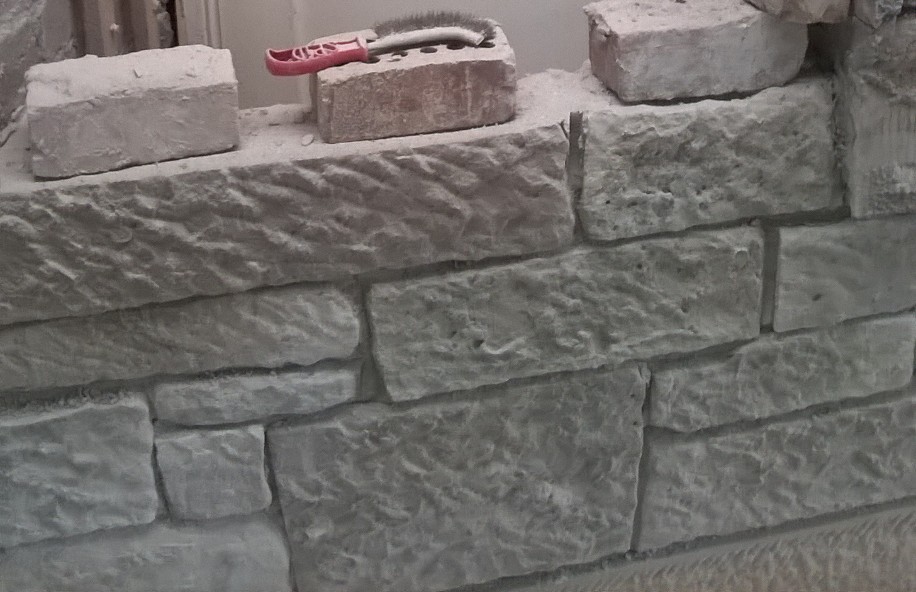Masonry
A mason is a person who builds with, or dresses, hard units such as brick, stone or block. The term ‘masonry’ can be used to describe the trade of masons, work done by them, or the actual, stonework, brickwork or blockwork that they construct.
Masonry is generally used to form the walls and other solid elements of buildings and structures such as bridges, tunnels and so on. It may be load bearing, forming an integral part of the structure, or non-load bearing, such as a partition wall or cladding.
Generally the size of the units is suitable for being laid by one person, although, increasingly, masonry is delivered to site in prefabricated panels that are craned into position. Masonry is often formed by laying a number of interlocking units, bound together by mortar, however, dry set masonry relies on the friction between the units to prevent movement, and does not require mortar.
Masonry is very strong in compression, but less effective at resisting lateral loading or tension forces. Additional strength can be achieved by increasing the thickness of the masonry, by the addition of piers or buttresses, or by the incorporation of reinforcement.
Masonry walls may have complex constructions to optimise performance, that may include hollow sections in the masonry itself, a cavity between internal and external leaves of the wall, insulation, a vapour barrier and internal and external finishes and decoration.
However, generally masonry does not require finishing and decorating and is very durable, so is relatively inexpensive to maintain and repair. It tends to offer good thermal mass, high acoustic insulation and good resistance to fire.
Masonry tends to be heavy, and so requires strong foundations. It can be prone to frost damage, staining and disintegration of joints.
To find out about the cleaning of masonry, see How to clean masonry.
NBS categorise masonry as:
| F10 | Brick / Block walling |
| F11 | Glass block walling |
| F20 | Natural stone rubble walling |
| F21 | Natural stone / ashlar walling / dressings |
| F22 | Cast stone ashlar walling / dressings |
| F30 | Accessories / Sundry items for brick / block / stone walling |
| F31 | Precast concrete sills / lintels / copings / features |
| F42 | Straw bale walling systems |
[edit] Related articles on Designing Buildings
- Bond stone.
- Brick.
- Building with structural stone.
- Cement mortar.
- Choosing stone.
- Defects in brickwork.
- Defects in stonework.
- Finding stone to conserve historic buildings.
- Flint.
- Freestone.
- How to clean masonry.
- Joggle.
- Kentish ragstone.
- Limestone for building.
- Masonry chimney.
- Modern stonemasonry.
- Mortar.
- Reaching new heights in the design of fire-safe tall buildings.
- Rendering.
- Rubble masonry.
- Sneck.
- Sourcing stone to repair Exeter Cathedral.
- Stone dressing.
- Sustainable stone.
- Terracotta.
- The Stone Restoration Handbook.
- Types of stone.
- Unfired clay masonry: An introduction to low-impact building materials.
- Weep hole.
[edit] External references
Featured articles and news
Latest Build UK Building Safety Regime explainer published
Key elements in one short, now updated document.
UKGBC launch the UK Climate Resilience Roadmap
First guidance of its kind on direct climate impacts for the built environment and how it can adapt.
CLC Health, Safety and Wellbeing Strategy 2025
Launched by the Minister for Industry to look at fatalities on site, improving mental health and other issues.
One of the most impressive Victorian architects. Book review.
Common Assessment Standard now with building safety
New CAS update now includes mandatory building safety questions.
RTPI leader to become new CIOB Chief Executive Officer
Dr Victoria Hills MRTPI, FICE to take over after Caroline Gumble’s departure.
Social and affordable housing, a long term plan for delivery
The “Delivering a Decade of Renewal for Social and Affordable Housing” strategy sets out future path.
A change to adoptive architecture
Effects of global weather warming on architectural detailing, material choice and human interaction.
The proposed publicly owned and backed subsidiary of Homes England, to facilitate new homes.
How big is the problem and what can we do to mitigate the effects?
Overheating guidance and tools for building designers
A number of cool guides to help with the heat.
The UK's Modern Industrial Strategy: A 10 year plan
Previous consultation criticism, current key elements and general support with some persisting reservations.
Building Safety Regulator reforms
New roles, new staff and a new fast track service pave the way for a single construction regulator.
Architectural Technologist CPDs and Communications
CIAT CPD… and how you can do it!
Cooling centres and cool spaces
Managing extreme heat in cities by directing the public to places for heat stress relief and water sources.
Winter gardens: A brief history and warm variations
Extending the season with glass in different forms and terms.
Restoring Great Yarmouth's Winter Gardens
Transforming one of the least sustainable constructions imaginable.
























Comments